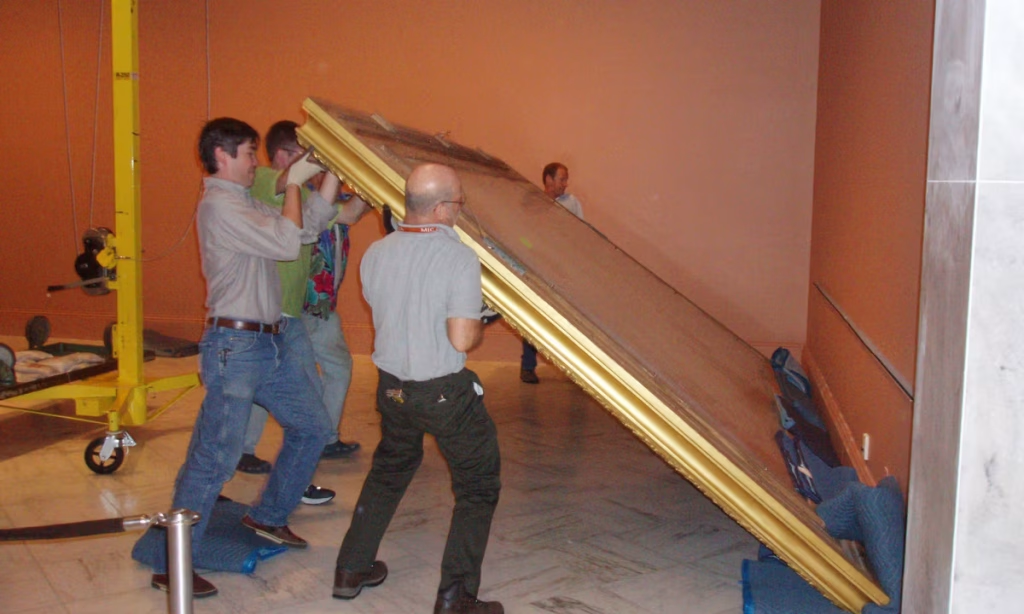The organisation Museums Moving Forward (MMF) launched in 2023 with a vision of creating “a more just museum sector” by 2030. To that end, MMF began surveying museum staff across the country in an effort to collect data, for the first time, on workplace culture. Today, the organisation released its second Report on Workplace Equity and Organizational Culture in US Art Museums with findings that show slight improvement with career satisfaction since its inaugural report. When it comes to other core issues—the sector’s seemingly eternal low pay, burnout and entrenched inequity—nothing much has changed except at institutions where workers have formed unions.
For this data cycle, MMF expanded the reach of the survey as well as the questions. When looking at workplace culture, for example, respondents were asked about the impact of their job on their health. Altogether, 3,100 staff members representing 91 institutions answered the survey, up from the 1,933 staff members at just over 50 museums who took part in the previous report in 2023.
The findings reflect an uptick in union organising. “We are seeing a massive wave,” says Mia Locks, MMF’s executive director. “Fifty-five percent of unions at art museums were formed in the last five years.”
Locks co-wrote the report with Liz Levine, who is the organisation’s manager of publications and events. Unsurprisingly, better pay is the most-cited need, but employees’ desire to have a greater say in decisions that affect them is equally important. Locks said it is a little too early to see what the long-term impact of organising will be in the museum world, but overall non-union museum workers make 78% of what their unionised colleagues make. (The report notes, however, that unionised museum workers are “more dissatisfied on nearly all metrics than the average museum worker”.)
Another key finding is that small museums are outperforming larger museums (those with annual operating budgets over $15m, for the study’s purposes) on nearly every facet of worker well-being, even when the pay is not as good, suggesting that job satisfaction is not just about the money. Data analysis on pay in this report was based on questions that delve into household income and responsibilities like child or elder care.
“We now have a pretty nuanced understanding of who can afford to work at a museum and at an entry level,” Locks says. “That is really, in my opinion, one of the biggest threats to diversity in the field. It’s not just who can afford to work here but who can afford to stay,” she said.
The conclusion of the 195-page report, directed at museum leaders, takes into account the challenges currently facing the sector. “This study was conducted before the recent wave of cultural censorship and what Pen America aptly describes as ‘the US’s most fraught cultural and political debates’, all of which especially impacts museum directors,” it reads in part.
“One of the areas we try to focus on is a living wage—we are not even talking about a thriving wage,” Locks says. MMF wants to go beyond what it takes to cover basic living expenses. “Now that we have some data on that as a field, we can set some goals.” For instance, it is known from the data that entry-level workers are the most diverse in the museum sector. Locks says the issue is retaining and supporting them with a living wage.
“The public really only knows us from our public facing work, but that needs to be supported by internal work—by a workforce,” says Makeda Best, the deputy director of curatorial affairs at the Oakland Museum of California, who has been involved in MMF from the beginning. “Museums make enormous contributions to the local economies in which they are situated, and to our national economy as a whole. It’s in society’s interest for this to be a thriving workforce, and the data MMF is producing is helping us to understand how to achieve that.”
MMF was created as a limited-life organisation by current and former museum workers who saw the need for more tools to assess whether or not they were making their goals. By the time it winds down in 2030, MMF will have produced four reports, providing the museum sector with quantitative data it hopes will allow leaders to make better decisions.
Putting a cap to the length of the organisation’s existence was one way to stay focused and stop having the same conversations without seeing change. The question posed as a sort of organising principle was, as Locks puts it: “Can we move this in our lifetime?”
